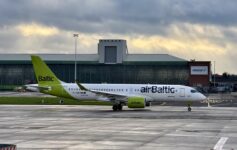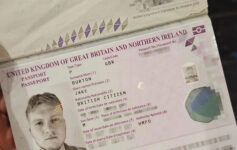
Resident pilot 121pilot, a captain for a major U.S. airline, authors a new column on Live and Let’s Fly called Ask Your Captain. His mission: demystify the flight deck and an answer any question you may have on the topic of flying.
Q: The Airbus A320 fleet has a fuel pump system that sounds like barking dogs for passengers in the back. Is there a reason why Airbus does this but Boeing doesn’t? Sometimes I hear it after we land too, wouldn’t it be sufficiently evened out after a flight?
A: So that barking dog noise isn’t a fuel pump it’s a hydraulic pump. The Airbus has three independent hydraulic systems (Green, Blue, and Yellow) and each system has two independent methods by which it can be pressurized. The Blue system is pressurized by an electric pump and in an emergency can also be powered by a Ram Air Turbine (RAT) which is a small propellor that drops from the belly of the airplane.
Green and Yellow are normally pressurized by engine-driven pumps though Yellow also has an electric pump for ground operation when the engines are off. The normal backup to these engine-driven pumps is another pump called the Power Transfer Unit or PTU. The PTU automatically turns on when it senses more than 500 psi of differential pressure between the Green and Yellow systems.
Ok great you’re thinking, but what on earth is that barking dog noise? Well, when you shut the engines down at the gate especially if you’ve taxied in on one engine, the PTU naturally sees this differential pressure happening and starts trying to equalize pressure between the two systems until the pressure bleeds off. The noise it makes sounds, as you’ve noted, like a barking dog down there in the cargo hold which is why we in the cockpit also refer to it as the barking dog. If you listen carefully, you’ll also hear it during engine start as the system turns itself on as part of its self-test logic.
Have a question for the captain? E-mail him at ask121pilot at yahoo dot com and you may see your question appear in a future column!




Interesting but it’s like watching a documentary about how they made Star Wars and finding out that it’s all fake. I don’t really want to know too much the eliminates the fantasy and magic of flying. Besides on Airbus planes I’m usually watching the interior shake itself apart on take-off and and just thankful to be back on the ground 🙂
Well if it were a 737 you’d be thankfull to be back on the ground alive!
How are you watching the interior on take off if you’re on the ground?
And and seriously, nationalism and prejudice aside, how are airbus interiors different from Boeing, when they are actually ordered separately by the operating airline?
25 years ago, I was sitting over the wings of a 320 that did a hard GA on short final, and probably between the rapid spool up and abrupt change in pitch, kicked up a mighty compressor stall on #1: flames came out the front and it felt like someone had whacked the airframe with a baseball bat. We leveled off and sort of hung there, the left side drooping, while that pump started up and didn’t stop. Got down fairly quickly.
I always suspected it was a single-engine landing, but never found out. I suppose I have my answer now.
Re: “when you shut the engines down at the gate especially if you’ve taxied in on one engine”, years ago I asked a 320 or 319 pilot the same question and got the same answer. He also said the barking could be stopped by pulling a circuit breaker. Is that correct? If so, are pilots hesitant to pull that breaker, maybe due to concern that at next engine start the pulled breaker won’t be noticed and/or reset?
Pilots are hesitant to “pull that breaker” because a breaker is not a switch and it is considered poor practice to use it as such. The operational considerations which lead to their design parameters are different. A switch is meant to energize and de-energize a circuit under normal conditions many, many thousands of times, maybe to millions of times before failure. Circuit breakers are meant to reliably interrupt excess current but typically have a mean life of a few thousand to tens of thousands of cycles. A regional jet doing four flights a day, two cycles of the breaker (taxi out, taxi back) per flight, would be 8 cycles per day. If the breaker had a typical life of 2,000 cycles that would only be 250 operational days. Meaning, that this breaker would, on average, fail one time per aircraft every year. A fail to energize would probably ground the aircraft. (I’m not an Airbus guy, but I would guess that an operation PTU is on the MEL.) A failure to de-energize would be a safety issue.
As an addendum, as I said, I am not an Airbus guy. I am taking it on faith that the pilot you mention is correct about there being such a circuit breaker. I am only speaking to the operation of circuit breakers in general.